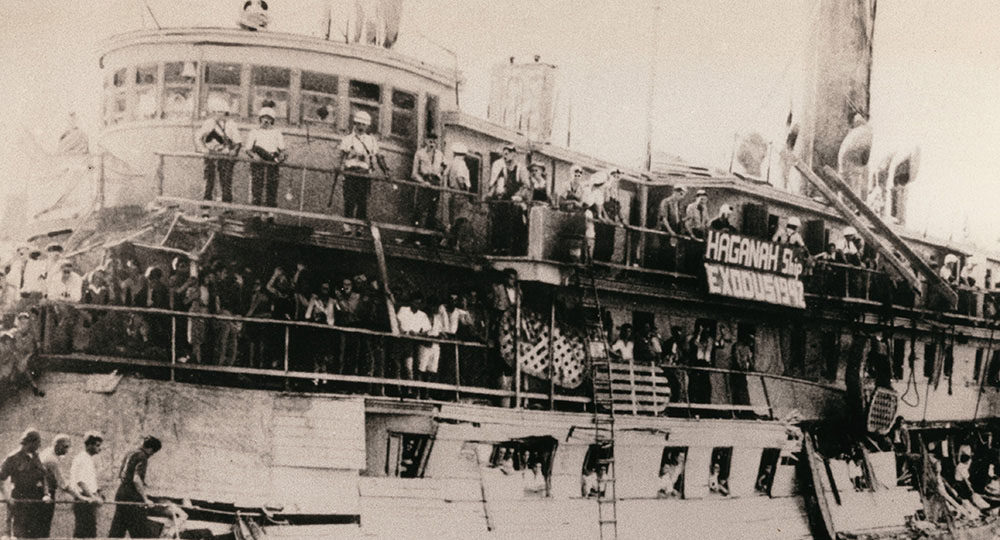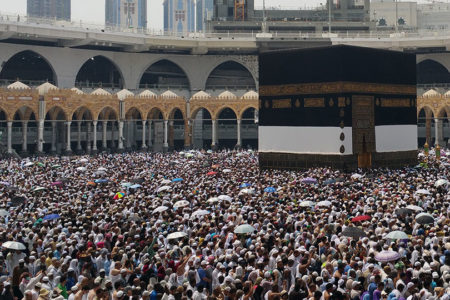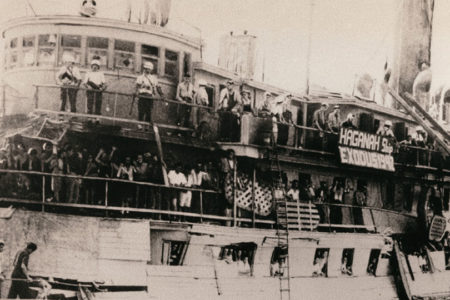Promise Betrayed
Jerusalem Under British Rule
In 1917, during World War I, the British captured Jerusalem from the Ottoman Turks and governed it from December 1917 until May 1948 when, depleted and detested by Jews and Arabs alike, they withdrew.
British rule altered the city—aesthetically, politically, and culturally.
In a little over three decades, the British shaped the architecture of the city, permanently influencing its hue by ordering all building exteriors be uniformly finished in Jerusalem stone, which ranges from gentle pink to off-white. They introduced radio, advanced public health and sanitation, established a currency, and issued postage stamps.
Since Mecca and Medina outrank Jerusalem in Islam, the Islamic Ottomans had treated the city like a backwater. The Christian British, however, venerated it and bestowed on it a veneer of modernity and Western civilization.
Had you observed Jerusalem evolve from Ottoman to British rule, you would have noticed the increase in population. Hardship during World War I had driven out many of the city’s 45,000 Jews. By 1922 the trend began to reverse. Of the 62,578 people living in Jerusalem, 33,971 were Jewish. There were 14,699 Christians and 13,413 Muslims, along with 495 others.
Jerusalem also began to develop a skyline. The Hebrew University officially opened on Mount Scopus in 1925. The centrally located YMCA, planned by Arthur Louis Harmon, architect of New York City’s Empire State Building, opened in 1935. It melded Byzantine, Romanesque, Gothic, and neo-Moorish styles.
Across the street stood the King David Hotel, with its European exterior and Levantine interior. It opened in 1931. The Arab-built Palace Hotel, another architectural gem, built in 1929, was several blocks away.
The General Post Office and Anglo-Palestine Bank went up side by side on Jaffa Street in the late 1930s. The already established outdoor Mahane Yehuda Market farther west on Jaffa Street had expanded. So, too, did the ultra-Orthodox Mea Shearim district, within a comfortable Sabbath walking distance of the Old City.
Small neighborhoods catering to various populations sprang up near the train station, whose single track, built by French contractors for the Ottomans, linked Jerusalem to the Mediterranean coast and beyond. The British improved both the track and station house. Nearby sprang up the mixed Christian and Muslim neighborhood of Bak’a and “colonies” for Greek and Armenian Christians.
In 1920, on land expropriated from the northern Jewish suburb of Atarot, the British even opened an airfield.
Materially, life was getting better day by day.
By 1928, electricity had become readily available. The city had a reservoir, though it lacked an infrastructure for efficient water distribution. The British also made headway in solving that perennial problem and, by 1935, had drawn a pipeline that delivered drinking water up to Jerusalem from the coastal plain. Many people still continued to use rooftop cisterns to capture rainwater.
And the population continued to increase. By 1931 there were 51,222 Jews, 19,894 Muslims, and 19,335 Christians.
Modern media, too, came to Jerusalem. The Palestine Broadcasting Service went on the air in 1936. The English-language Palestine Post appeared in 1932. Haaretz, printed in Hebrew since 1918, was brought up to Jerusalem from Tel Aviv daily. And the father of modern Hebrew, Eliezer Ben-Yehuda, had launched the fledgling Hebrew press back in Ottoman days.
The radio studios were in Jerusalem, while the transmitter was in Ramallah slightly north of the city. Broadcasts were in English, Arabic, and Hebrew. The Jews grumbled that less than 30 percent of airtime was devoted to Hebrew programming—and that included classical music. Radio certainly caught on. By 1946 there were 60,000 licensed sets, 80 percent purchased by Jews.
In the political realm, try as they might, the British proved to be serial fumblers.
On November 2, 1917, a few weeks before they had captured Jerusalem, His Majesty’s government issued the Balfour Declaration, promising to establish a national home for the Jewish people in Palestine.
The post-World War I international powers adopted this promise at the 1920 San Remo conference. And in 1922, the League of Nations codified the Balfour Declaration, granting Britain the “Palestine Mandate” expressly so the British could create “a national home for the Jewish people.”
As soon as they arrived in Jerusalem, however, the British got wobbly. Their default policy was to placate the Arabs, who viscerally opposed creating a national Jewish homeland anywhere in the Middle East.
On September 16, 1922, the British divided Mandatory Palestine into two administrative areas, earmarking 77 percent for the Arabs. The space for a Jewish national home shrunk dramatically. In 1946 that big chunk of territory officially became the Hashemite Kingdom of Transjordan.
With the appointment of Ronald Storrs as Jerusalem’s military governor in 1917, the die had been cast. Thoroughly unsympathetic to the Zionist cause, Storrs made sure the city’s Jewish majority was not reflected in the distribution of municipal power.
He organized a municipal council and appointed an equal number of re-resentatives from the various communities. Later the British arranged elections for a 12-member council evenly divided between Christians, Muslims, and Jews based on a dozen constituencies. Even though the city had a Jewish majority and the Jews comprised most of the taxpayers, the British always appointed a Muslim mayor and two deputy mayors: one Jewish and one Christian.
As Jerusalem’s Jewish population grew, British efforts to appease Arab rage invariably fell short.
During Passover 1920, the city’s Arabs rioted, killing five Jews, wounding hundreds, and looting property. This was one in a seemingly relentless series of intifadas (uprisings) that have now spanned nearly 100 years.
Anything could provoke the Arabs. Typically, it was an unfounded rumor that the Jews planned to destroy the Dome of the Rock or al-Aqsa Mosque, Muslim holy places atop the Temple Mount.
Things went from bad to worse. In 1921, the British appointed Hajj Amin al-Husseini to be the mufti, or spiritual leader, of the area’s Arab Muslims. He would remain at the epicenter of anti-Zionist incitement until he fled to Hitler’s Berlin during World War II.
With the mufti leading the way, Arab violence became a toxic reality of life in Jerusalem. In 1925 the spark was a general strike. In 1926 it was a protest against the French presence in Syria. In 1928 it was the installation of a flimsy partition at the Western Wall to separate Orthodox Jewish men and women during the Yom Kippur prayer service.
In August 1929 some of the most gruesome and sadistic Arab rioting enveloped Hebron, Jaffa, and Jerusalem. The spark? Jews had brought chairs to the Western Wall so elderly and infirm worshipers could sit during Yom Kippur services. A week of countrywide rioting left 116 dead.
Sharing environs with the Arabs became too dangerous. Jewish shop owners began abandoning the Old City.
In 1933, in a variation on a theme, the Arabs rioted, this time targeting the British as much as the Jews. In 1936 the mufti instigated yet more rioting—this time under the auspices of the Arab Higher Committee.
In an attempt to mollify the Arabs, the British initiated one measure after another that backpedalled on the Balfour Declaration. The British government’s Peel Commission of 1936 recommended dividing the remainder of Palestine into two states. But the Arabs rejected any territorial compromise, even though they would have gotten most of the land.
Then Arab violence escalated. Organized gangs bombed public transport and shot at vehicles along the Tel Aviv-Jerusalem road.
And still, Jerusalem retained its Jewish majority.
Finally, in May 1939, only months before World War II would engulf Europe’s Jews, Britain officially reneged on the Balfour Declaration. London issued a so-called White Paper, closing the gates of Palestine to Jewish people and barring them from purchasing land.
After that, British authorities dropped even the pretense that Jewish interests were of any concern. They kept the doors to Palestine locked tightly throughout the Holocaust, denying Europe’s Jews a haven. Still, the two main Zionist camps led by David Ben-Gurion and Ze’ev Jabotinsky supported Britain’s war effort.
Only in February 1944, with the Allied victory assured, did the Irgun organization under Jewish leader Menachem Begin kick off its campaign to throw the British out of Palestine with an attack on the immigration offices in Jerusalem.
That year, Jerusalem’s Muslim mayor died in office. But under Arab pressure, the British did not allow his Jewish deputy to succeed him, even though Jews were a 61 percent majority.
World War II ended in Europe in May 1945. But Jerusalem found no peace. Jabotinsky’s followers embarked on a guerilla campaign to throw the British out of Palestine.
Finally, in November 1947, the UN decided that, with the exhausted British quitting, the Jews and Arabs should divide eastern Palestine into two states. The Arabs rejected the compromise; the Jews reluctantly accepted it.
Open warfare between Arab marauders and Jewish self-defense forces became a feature of daily life. Jerusalem neighborhoods were divided by barbed wire to protect residents from attack. In February 1948, the Palestine Post building was bombed; and two months later, 77 Hebrew University and Hadassah Hospital workers were murdered when Arabs attacked their convoy to Mount Scopus.
Food and sometimes water became scarce. Arab guerrillas attacked trucks bringing supplies up to Jerusalem from the coastal plain.
Jerusalem went into the War of Independence already partly divided: The Old City, for all practical purposes, was in Arab hands.
Jewish life behind the Old City walls had become untenable; and the last remaining Jews, mostly Orthodox elderly people, were evacuated on May 27, 1948, on the eve of the city’s fall to the Arabs.








